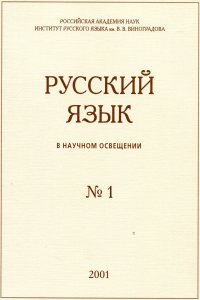Formation of the principles of Church Slavonic spelling in the 17th century
Abstract:
The article describes the formation of the principles of Church Slavonic spelling in the first half of the 17th century. From the beginning of book printing to the end of the 17th century, standard bookish spelling went through four stages of development. Spelling principles which define the orthographic appearance of the modern Church Slavonic language were mainly formed in the 1640s, during the reign of Patriarch Joseph (1642-1652). In mid-17th century, the application of the principle of “antistikh” (orthographic differentiation of homonyms), the principle of transliterating stems of Greek lexemes, and the positional principle changed Church Slavonic spelling and formed a learned variety (in the terminology of V. M. Zhivov) of the standard book language. These principles determine the choice of doublet letters at the beginning / in the middle and at the end of a word in originally Slavonic lexemes as well as in lexemes borrowed from Greek. Sometimes different principles in some parts of the graphic system overlap, which creates conditions for variation. The choice of the correct doublet letter is made according to the grammatical characteristics of the word. As a result of the changes which occurred in the 1640s, spelling of the “learned” book language began to differ from the spelling of handwritten Church Slavonic texts. Some spelling rules and principles of the Church Slavonic language were also transferred into secular spelling, which began to form after Peter the Great’s reform of the alphabet.


